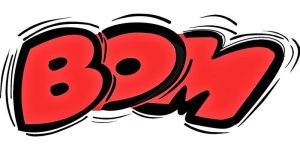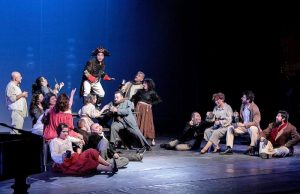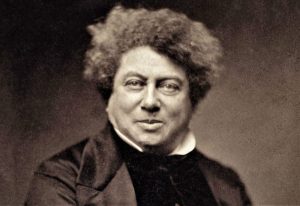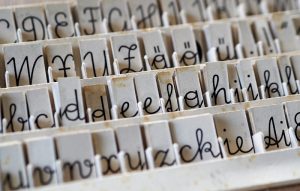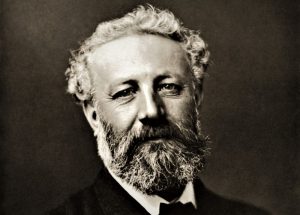Onomatopoeia
The onomatopoeia is a stylistic resource widely used in literature when it is necessary to represent by writing, environmental sounds in which we find ourselves and also the fauna. The best-known onomatopoeia come from the world of comics with the television series "Batman", in which appeared the sounds of blows written in large letters and exclamation marks. It also had a great presence in superhero caricatures such as those produced by Marvel comic or DC comic, where Batman comes from; and also, for humorous caricatures such as Condorito. But it is not only used for the sounds of blows or those produced by the human being in an exclamatory way. Its field includes other sounds that are not produced by man as sounds of animals, objects or things.
What is onomatopoeia?
The onomatopoeia is a word that represents or imitates a natural sound or an acoustic act that is not typical of human language, and that lacks a subjective connotation or an emotion. This is a paralinguistic element because it makes external reference to the language but does not have a function in the language, it only complements the message. The onomatopoeia is a diction figure that can be formed by interjections or alliterations.
Currently, songs are being written that use this resource to refer to animal sounds or objects. However, it is important to mention that these sounds may change depending on the language in which they are used. For example, the sound of dog barking in Spanish is guau, guau, but in French is raff, raff and in German is wuff or wau.
Etymology
The word onomatopoeia comes from the Greek and is formed by the word onomat that means sound or word and poieo that means to create. In this sense, it means to create words or sounds.
Characteristics of onomatopoeia
- They’re mostly monosyllables.
- It does not use common Spanish spellings.
- The sound of an onomatopoeia can be repeated or modified.
- They can be lengthened in writing.
- They can have syntactic function.
- It borrows from other languages.
- They can be auditory or visual.
- They are very frequent in comics.
- May be formed by interjections or alliterations.
- They can represent sounds of people, animals or objects.
- Varies by language.
Uses
In literature, onomatopoeia is used to enrich reading by describing the sounds that are present or generated in the environment where the story takes place.
They are also used to imitate the sounds made by animals, human noises or those caused by machines or elements of nature.
Examples of onomatopoeia
Different types of onomatopoeia are presented below
Example 1
“The clock was ticking, ticking, ticking.”
As you can see, this onomatopoeia represents the sound of the clock.
Example 2
“On the radio there is also a bull, On the radio there is also a bull,
And the MUU bull,
The MOO cow,
The lamb BEEE,
The goat MEEE,
The dog GUAU GUAU,
The cat MIAO,
The pigeon RUU,
The turkey GLU GLU GLU,
The rooster COCOROCO
And the hen COO,
And the chick PIO
The Chicken PIO, The Chicken PIO, The Chicken PIO,
There’s a tractor on the radio, there’s a tractor on the radio,
And the tractor BRUUM,
And the tractor BRUUM,
And the tractor BRUUM,
And the chicken (puaggg) OH OH!”
Song: The Chicken Pio Author: Pulcino Pio
In the fragment of this song, you can appreciate the sounds of different animals such as the bull, the cow, the lamb and even a tractor. This is an example that allows us to evidence the use of onomatopoeia in a song for children.
Example 3
Croa, croa, the frog sang…
In this phrase, one can observe the use of the onomatopoeia to represent the sound made by the frog.
Example 4
The boy stepped in the puddle and chas, chas… the water splashed on his feet.
In this example, it can be appreciated that the sound that is sought to represent in the onomatopoeia, is that of the water. In this sense, it is related to a thing and not to an animal.
Example 5
Knock on the door: knock, knock. No one answers.
In this example it reproduces in written form the sound that is made when the door is knocked.
Example 6
Ha, ha, ha, laughed Antonio.
This onomatopoeia is a human sound, in this case, a person’s laughter.
Example 7
“Plop! Plop! Super plop!
The golden grains clatter,
they tremble, bounce, break and thunder,
they sponge, they swell! superplop!
They burst in the pot. What an explosion!”
Evaleen Stein, Popcorn
In this fragment of Evaleen’s poem, one can appreciate the use of onomatopoeia to describe how popcorn is cooked. In this case it represents the sound of an inanimate thing.
How to cite this article?
Briceño V., Gabriela. (2019). Onomatopoeia. Recovered on 23 February, 2024, de Euston96: https://www.euston96.com/en/onomatopoeia/
